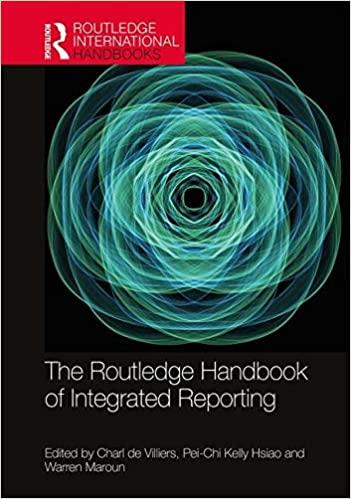Question
1. (Divisional costs of capital and investment decisions) Saddle River Operating Company (SROC) is a Dallas-based independent oil and gas firm. In the past, the
1. (Divisional costs of capital and investment decisions)
Saddle River Operating Company (SROC) is a Dallas-based independent oil and gas firm. In the past, the firm's managers have used a single firm-wide cost of capital of 11 percent to evaluate new investments. However, the firm has long recognized that its exploration and production division is significantly more risky than the pipeline and transportation division. In fact, firms comparable to SROC's E&P division have equity betas of about 1.5, whereas distribution companies typically have equity betas of only 1.1. Given the importance of getting the cost of capital estimate as close to correct as possible, the firm's chief financial officer has asked you to prepare cost of capital estimates for each of the two divisions. The requisite information needed to accomplish your task is presented here:
The cost of debt financing is 7 percent before taxes of 36 percent. However, if the E&P division were to borrow based on its projects alone, the cost of debt would probably be 8.4 percent, and the pipeline division could borrow at 6.3 percent. You may assume these costs of debt are after any flotation costs the firm might incur.
The risk-free rate of interest on long-term U.S. Treasury bonds is currently 3.7 percent, and the market-risk premium has averaged 6.7percent over the past several years.
The E&P division adheres to a target debt ratio of 50 percent, whereas the pipeline division utilizes 80 percent borrowed funds.
The firm has sufficient internally generated funds such that no new stock will have to be sold to raise equity financing.
a. Estimate the divisional costs of capital for the E&P and pipeline divisions.
b. What are the implications of using a company-wide cost of capital to evaluate new investment proposals in light of the differences in the costs of capital you estimated previously?
a. What is the divisional cost of capital for the E&P division? % (Round to two decimal places.) ANSWER:
What is the divisional cost of capital for the pipeline division? % (Round to two decimal places.) ANSWER:
b. "The dramatic difference in the two divisional costs of capital underscores the importance of analyzing the capital costs corresponding to divisions of very different risk."
Is the above statement true or false? ANSWER:
2. (Equivalent annual annuity)
Rib & Wings-R-Us is considering the purchase of a new smoker oven for cooking barbecue, ribs, and wings. It is looking at two different ovens. The first is a relatively standard smoker and would cost $ 50,000, last for 8 years, and produce annual cash flows of $ 16,000 per year. The alternative is the deluxe, award-winning Smoke-alator, which costs $ 78,000 and, because of its patented humidity control, produces the "moistest, tastiest barbecue in the world." The Smoke-alator would last for 11 years and produce cash flows of $ 23,000 per year. Assuming a required rate of return of 10 percent on both projects, compute their equivalent annual annuities (EAAs).
The EAA of the standard smoker is $. (Round to the nearest dollar.) ANSWER:
The EAA of the Smoke-alator is $. (Round to the nearest dollar.) ANSWER:
Rib & Wings-R-Us should purchase the Smoke-alator or standard smoker. ANSWER:
PLEASE ANSWER EACH (BOTH) QUESTIONS FULLY AND CORRECTLY!!!
Step by Step Solution
There are 3 Steps involved in it
Step: 1

Get Instant Access to Expert-Tailored Solutions
See step-by-step solutions with expert insights and AI powered tools for academic success
Step: 2

Step: 3

Ace Your Homework with AI
Get the answers you need in no time with our AI-driven, step-by-step assistance
Get Started


